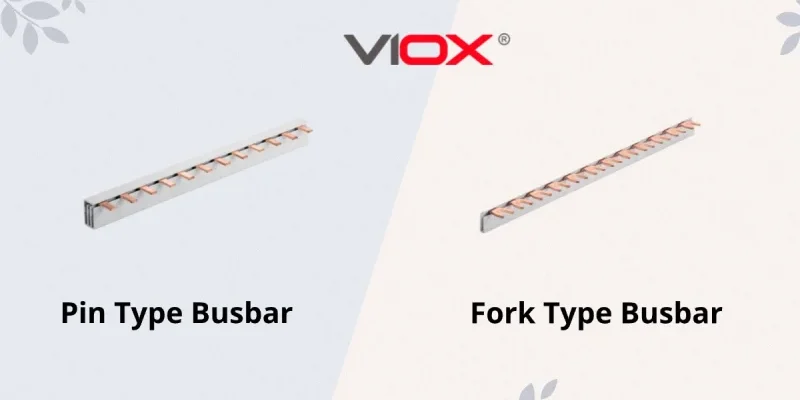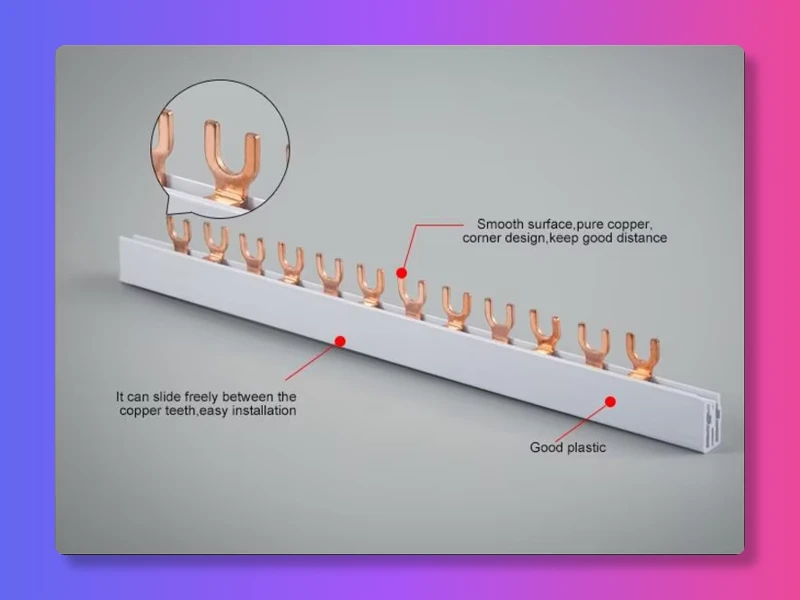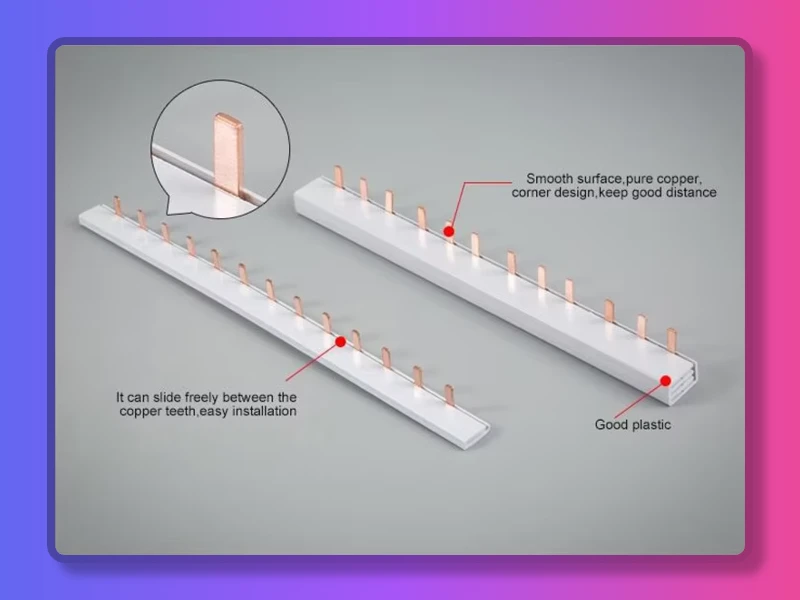포크형 및 핀형 버스바는 전력 분배 시스템의 필수 구성 요소로, 각각 다양한 애플리케이션에 맞게 설계, 전도성 및 설치에 있어 고유한 이점을 제공합니다.
포크형 버스바 설계
포크형 버스바스페이드 단자라고도 하는 이 단자는 포크와 같은 독특한 모양으로 단자 지점에서 쉽게 연결하고 분리할 수 있는 것이 특징입니다. 이 디자인은 여러 가지 장점을 제공합니다:
- 안전한 연결로 전기적 결함의 위험을 줄입니다.
- 전체 단말기를 제거하지 않고도 빠르게 연결 해제 및 재연결할 수 있습니다.
- 전기 시스템에서 뛰어난 전도성과 신뢰성을 제공합니다.
- 견고한 구조로 건설 기계 및 중전기 장치에 적합합니다.
- 배선 시스템을 정리하여 배전반과 배전반의 혼란을 최소화하고 안전을 강화합니다.
이 버스바의 포크형 디자인은 특히 두 개의 입력 단자가 필요한 다양한 전기 애플리케이션에서 다양성과 효율성에 기여합니다.
핀형 버스바 설계
핀형 버스바 는 핀을 통해 연결할 수 있는 기둥 모양의 구조로 컴팩트하고 다용도적인 디자인을 제공합니다. 이 버스바는 다양한 애플리케이션에 맞게 길이를 맞춤 설정할 수 있어 개인 맞춤형 또는 공간 제약이 있는 설치에 이상적입니다. 핀형 버스바의 주요 특징은 다음과 같습니다:
- 저전압 전원 박스 및 조명 박스에 적합한 컴팩트한 디자인.
- 다양한 애플리케이션에서 유연하게 사용할 수 있도록 길이를 사용자 지정할 수 있습니다.
- 에너지 손실을 최소화하면서 전기 부하를 효율적으로 처리합니다.
- 낮은 접촉 저항으로 우수한 전도성을 보장합니다.
- 공간 최적화가 중요한 회로 차단기 및 필수 전기 설비에 이상적입니다.
핀형 버스바의 기둥 모양 디자인은 다양한 전기 시스템, 특히 공간 효율성이 우선시되는 환경에서 설치가 용이하고 적응성이 뛰어납니다.
버스바 전도도 비교
포크형과 핀형 버스바의 전도도를 비교하면 둘 다 강력한 성능을 보이지만 미묘한 차이점이 있습니다. 포크형 버스바는 전도성이 뛰어나 전기 시스템에서 안정적이고 안전한 연결을 제공하는 것으로 유명합니다. 이러한 설계는 안전한 연결을 유지하여 전기적 결함의 위험을 줄이고 시스템 안정성을 향상시키는 데 도움이 됩니다. 반면 핀형 버스바는 낮은 접촉 저항으로 전도성이 우수하여 전기 부하를 효율적으로 처리하는 동시에 에너지 손실을 최소화합니다. 컴팩트한 디자인으로 공간 제약이 있는 환경에서 효율적인 전력 분배를 지원합니다.
애플리케이션 및 설치
포크형 부스바는 견고함과 신뢰성으로 인해 건설 기계 및 중전기 장치에 탁월한 성능을 발휘합니다. 포크형 부스바는 스위치 기어와 배전반의 배선을 깔끔하게 정리할 수 있도록 설계되어 안전성을 높이고 복잡함을 줄여줍니다. 반면 핀형 부스바는 공간 최적화가 중요한 회로 차단기, 저전압 전원 박스, 조명 박스에 널리 사용됩니다. 설치 측면에서 핀형 버스바는 일반적으로 더 빠르고 쉽게 설치할 수 있어 개인 맞춤형 설치나 공간 제약이 있는 설치에 적합하지만, 포크형 옵션은 설치가 간단하지만 더 많은 공간이 필요할 수 있습니다.




